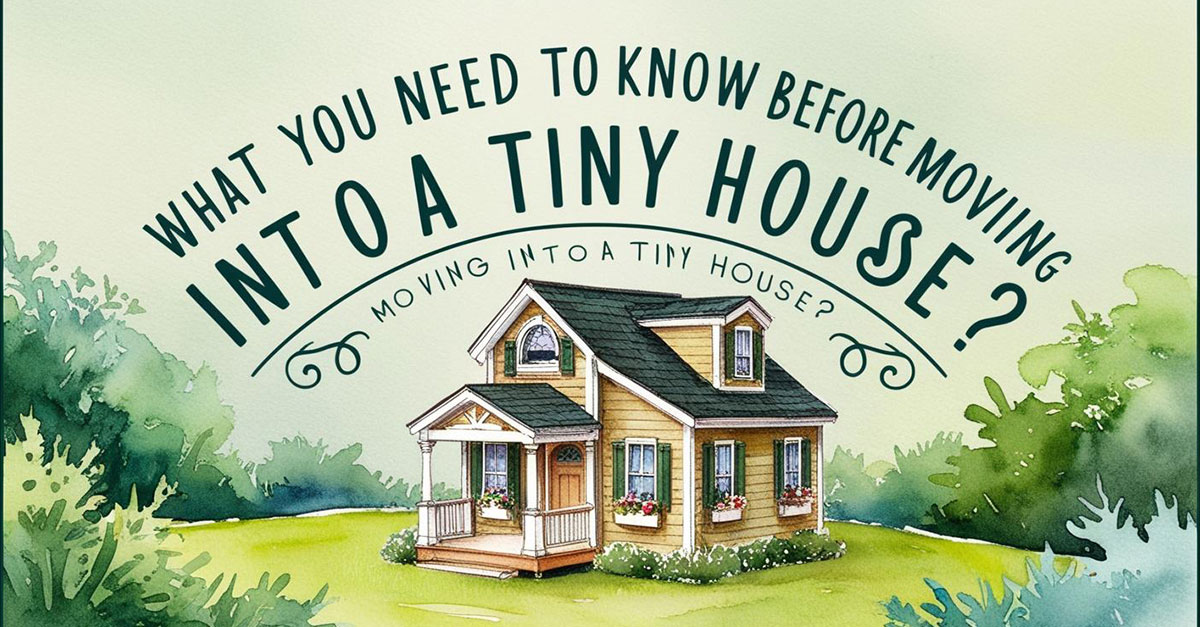News
What You Need to Know Before Moving into a Tiny House

Tiny houses have gained massive popularity as a practical, sustainable, and affordable housing option. But before downsizing and embracing the tiny living lifestyle, there are several important factors to consider. In this post, we’ll cover what you need to know to make your transition to a tiny house smooth and successful.
1. Assess Your Motivation for Tiny Living
Why are you considering a tiny house?
- Affordability: Tiny homes are significantly cheaper to build and maintain compared to traditional houses.
- Sustainability: With a smaller footprint, tiny homes are eco-friendly and energy-efficient.
- Minimalism: Living in a tiny house encourages decluttering and prioritizing what truly matters.
Understanding your motivations will help you make decisions that align with your long-term goals.
2. Understand Zoning Laws and Building Codes
Zoning regulations and building codes vary by location and can determine whether you can legally place or live in a tiny house.
- Permanent vs. Mobile Tiny Homes: Some areas allow tiny homes on foundations but restrict those on wheels.
- Tiny Home Communities: Look for areas or communities that are tiny-house-friendly.
- Utilities and Permits: Ensure access to essential utilities like water, electricity, and sewage.
Research your local laws or consult a professional to avoid legal hurdles.
3. Plan Your Space Wisely
Tiny homes require smart design and efficient use of space.
- Essential Features: Prioritize must-haves like a functional kitchen, bathroom, and sleeping area.
- Multi-Functional Furniture: Invest in furniture that serves multiple purposes, such as a sofa bed or a foldable dining table.
- Storage Solutions: Maximize vertical space and use creative storage options like under-bed drawers or wall-mounted shelves.
Designing for comfort and practicality is key to enjoying your tiny home.
4. Prepare for Lifestyle Changes
Downsizing requires significant adjustments:
- Decluttering: You’ll need to pare down belongings to only the essentials.
- Shared Spaces: If you’re living with others, prepare for closer quarters and limited personal space.
- Outdoor Living: Use outdoor areas to extend your living space with patios, decks, or gardens.
A minimalist mindset will help you adapt more easily to a tiny home lifestyle.
5. Budget for Costs Beyond the Build
While tiny homes are affordable, there are additional expenses to consider:
- Land Costs: If you don’t already own land, purchasing or renting a lot can add to your expenses.
- Utilities and Hookups: Connecting to utilities or using off-grid solutions like solar panels can be costly.
- Maintenance: Tiny homes require upkeep, especially mobile ones that are moved frequently.
Create a comprehensive budget to account for these factors.
6. Decide Between DIY or Professional Build
- DIY Build: A cost-effective option if you have the skills and time, but it requires detailed planning and effort.
- Professional Build: More expensive but ensures your home meets safety standards and is built to last.
Weigh the pros and cons of each approach based on your budget, timeline, and expertise.
7. Consider Your Energy and Utility Needs
Tiny homes often rely on alternative energy sources:
- Solar Power: A popular choice for off-grid living.
- Composting Toilets: An eco-friendly alternative to traditional plumbing.
- Water Systems: Plan for rainwater collection or well access if off-grid.
Evaluate your lifestyle to determine which utility options best suit your needs.
8. Be Ready for Challenges
Tiny house living isn’t without its obstacles:
- Weather Concerns: Insulation and heating are crucial for surviving harsh winters.
- Social Perceptions: Tiny living is still unconventional and might attract questions or skepticism.
- Adjusting to Space: It may take time to get used to the limitations of a smaller home.
Approach these challenges with an open mind and a problem-solving attitude.
9. Join the Tiny House Community
Connecting with others in the tiny house movement can provide support, inspiration, and practical advice.
- Online Forums and Groups: Join platforms where enthusiasts share their experiences and tips.
- Tiny House Festivals: Attend events to learn more and network with like-minded individuals.
- Local Meetups: Build connections within your area for local advice and opportunities.
10. Test the Waters
If you’re unsure about fully committing to tiny living:
- Rent a Tiny House: Stay in a tiny house for a few weeks to see if it suits you.
- Experiment with Downsizing: Start living with fewer belongings in your current home.
These steps can help you decide if tiny house living is the right fit for you.
Conclusion
Living in a tiny house can be a rewarding experience, offering simplicity, affordability, and sustainability. By considering the factors above and planning carefully, you’ll be better prepared to make the most of this lifestyle. Ready to downsize and embrace the tiny living movement? Share your thoughts and questions in the comments below!
